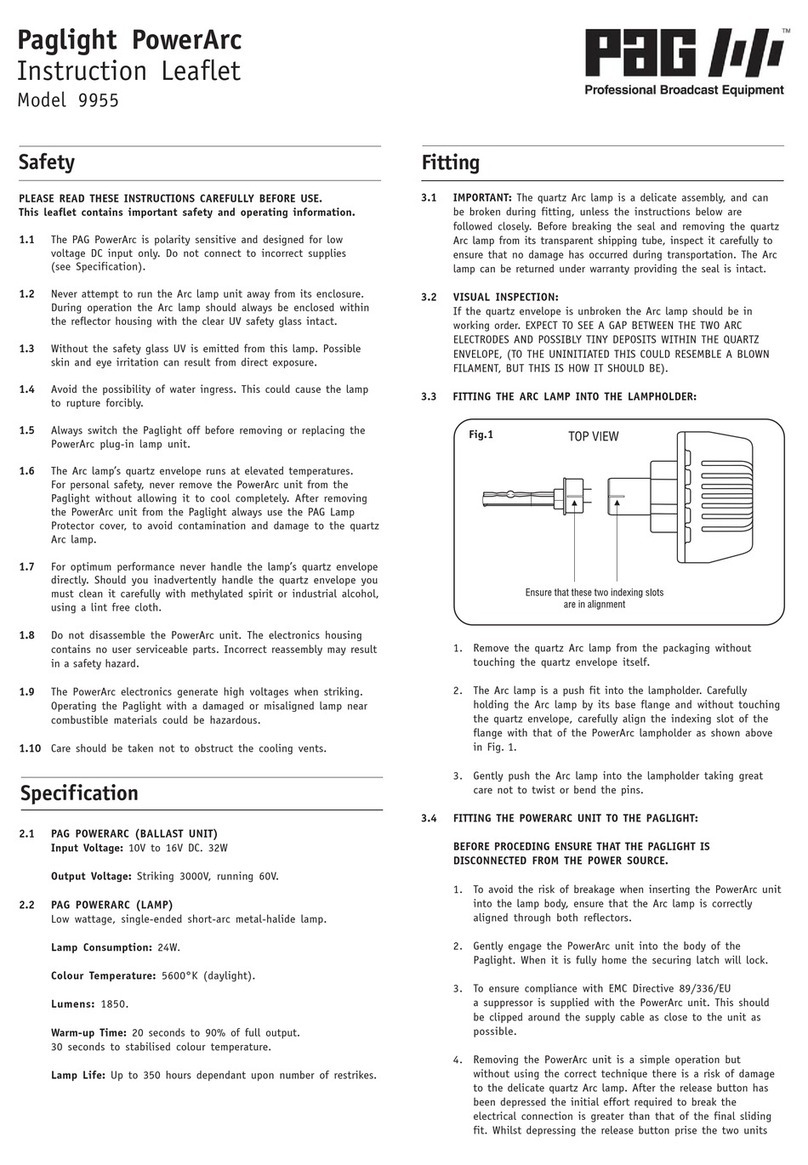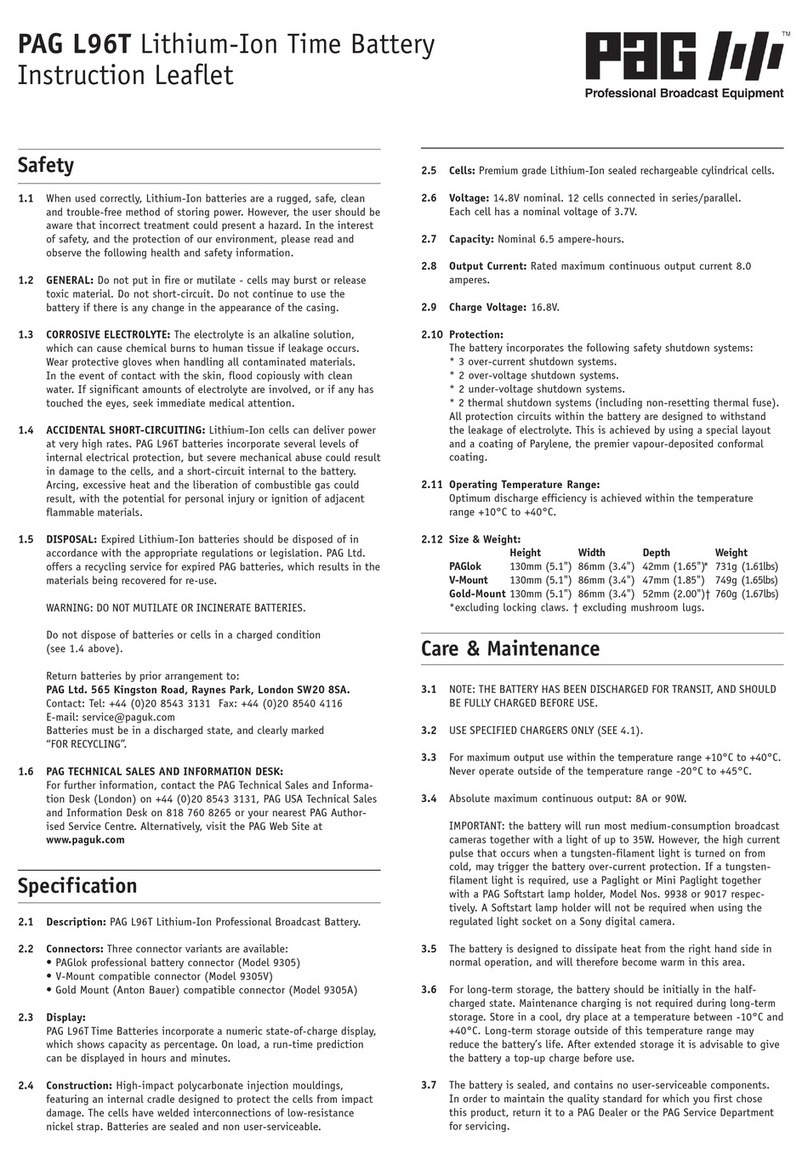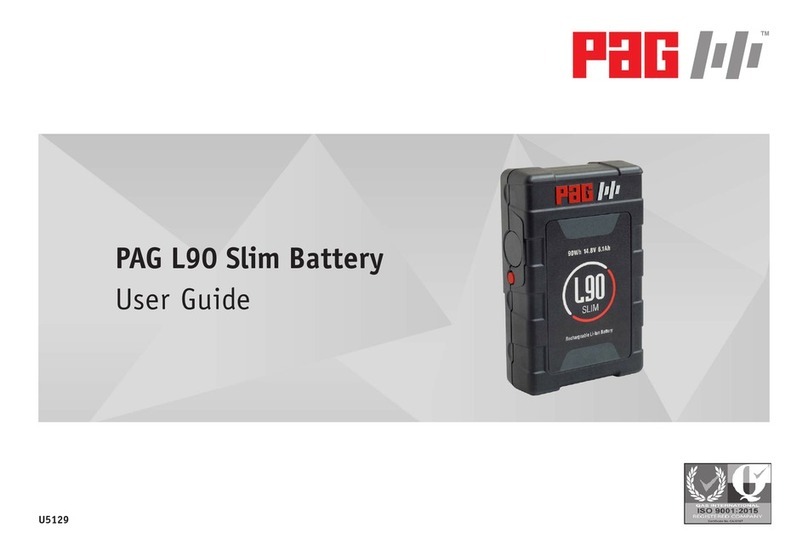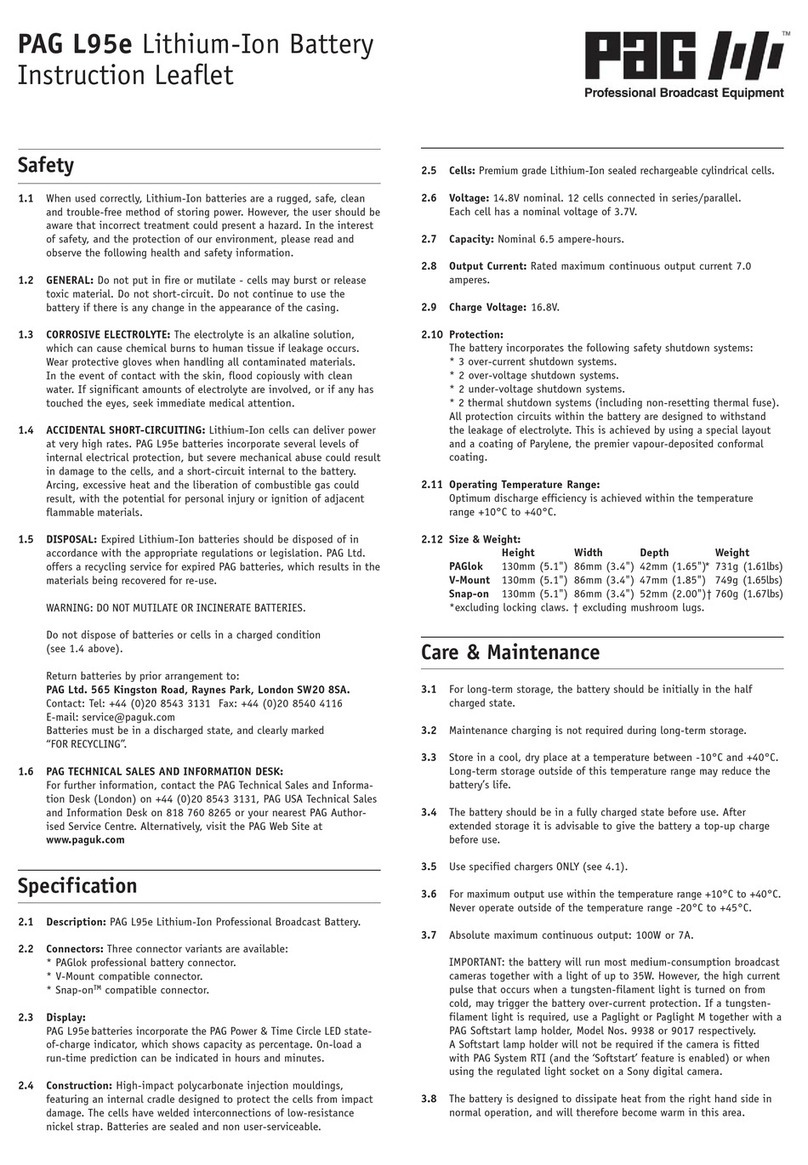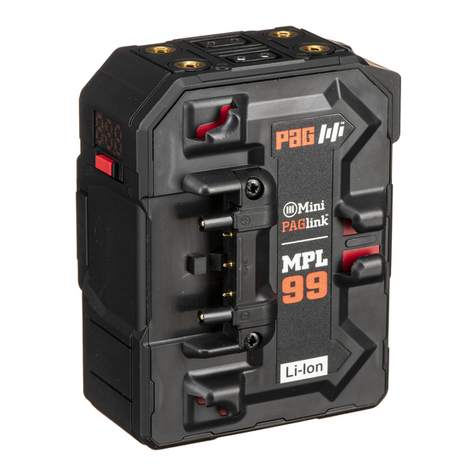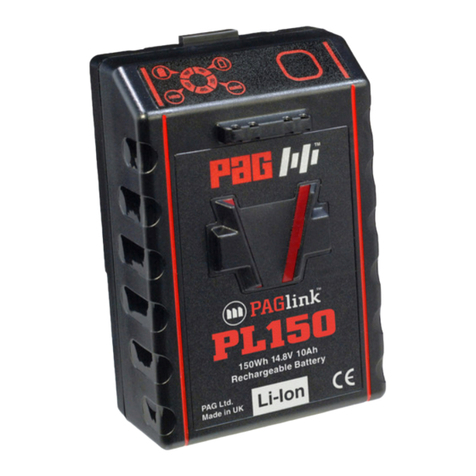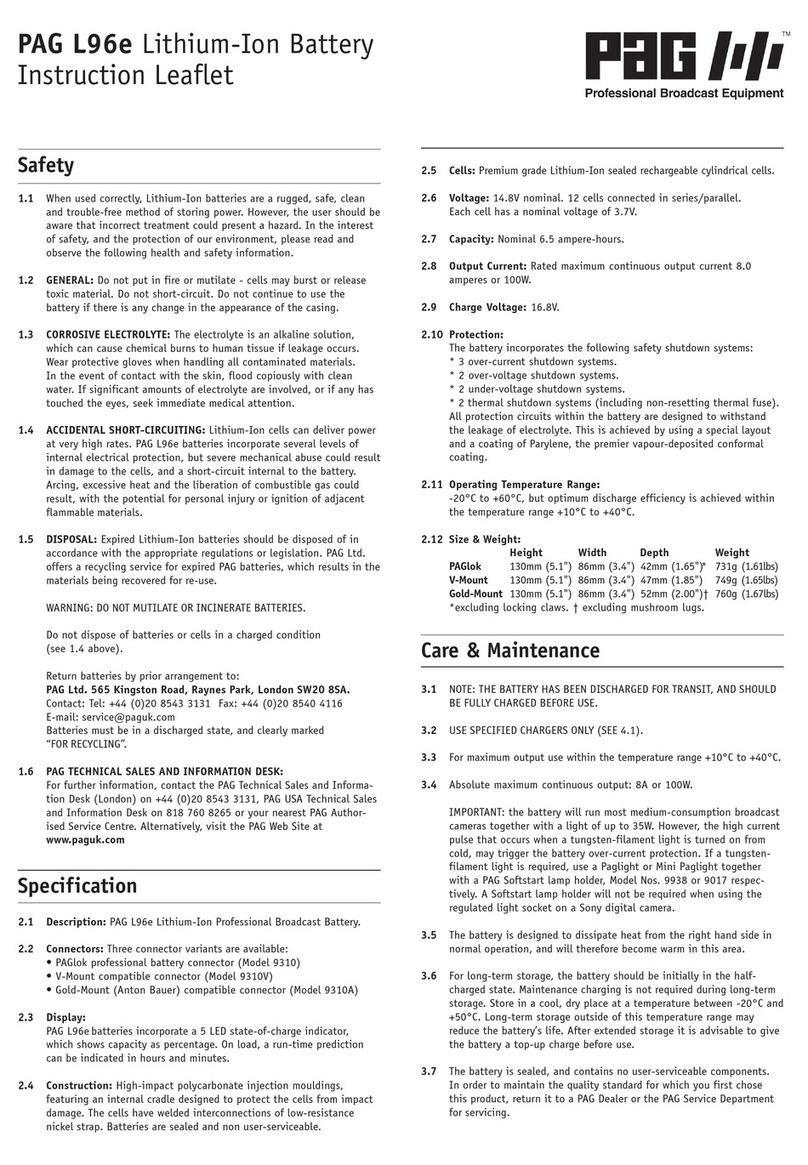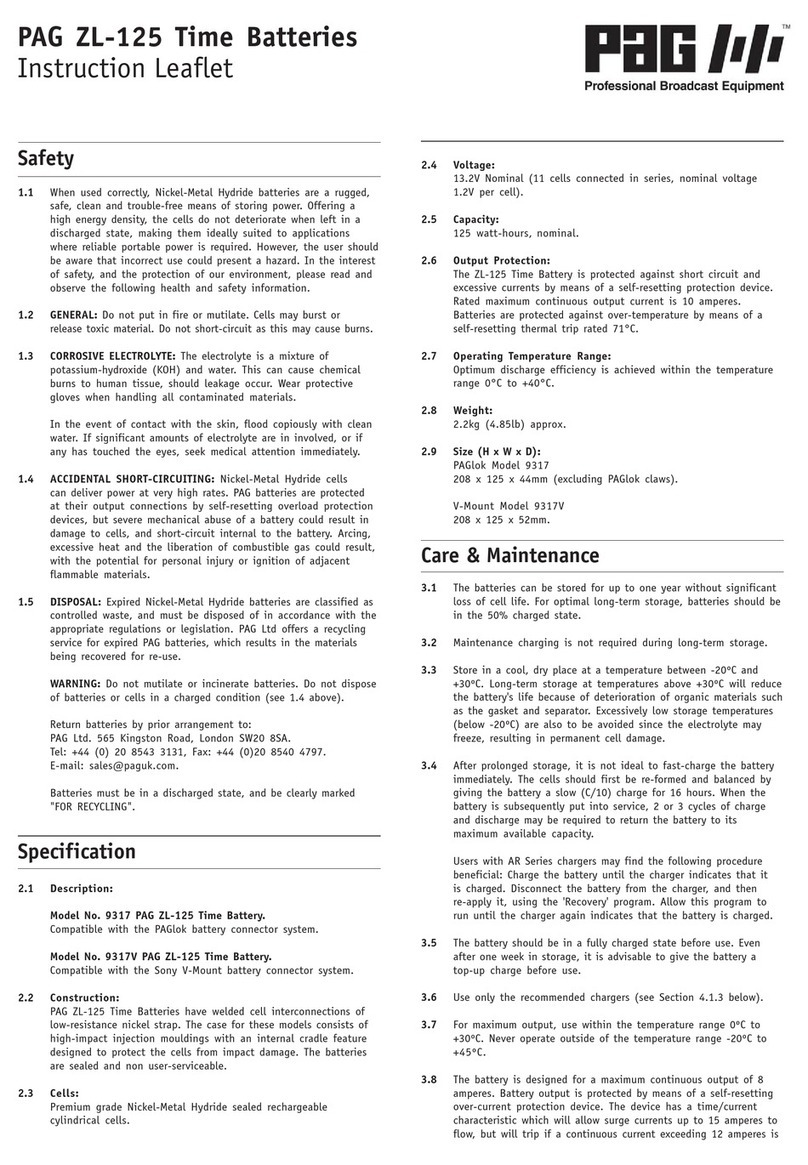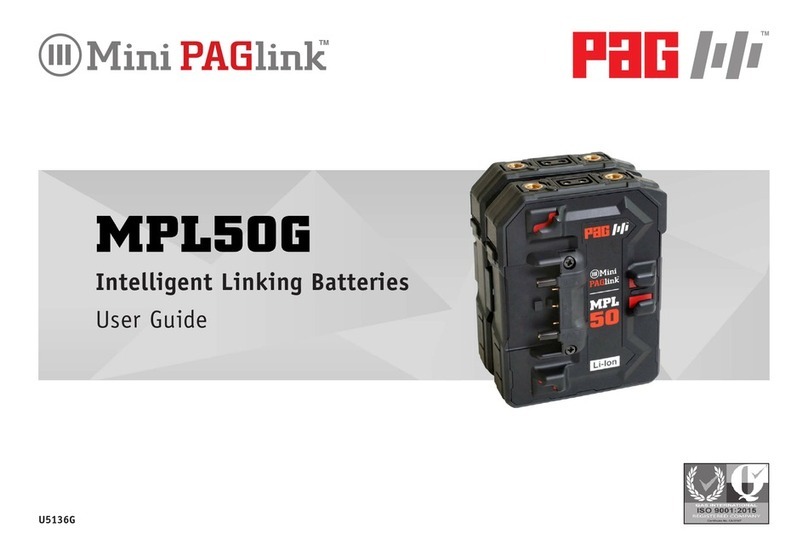
3.4 Charge Times: Times given are for fully-discharged batteries to fully-
charged, using a PAGlink PL16 charger.
3.5 PAGlink batteries display their individual status, during charging,
on their built-in display. When using PL16 chargers, the characters
of the numeric display can be inverted, for legibility, with a single
button press. The display reverts automatically after removal from
the charger.
7
3. Charging
3.1 IMPORTANT: READ THE CHARGER HANDBOOK BEFORE ATTEMPTING TO
CHARGE THE BATTERY.
3.2 The following PAGlink chargers will charge PAGlink V-Mount batteries,
individually or linked, regardless of their capacity or state of charge:
The following chargers will charge PAGlink V-Mount batteries
individually or linked (batteries must be within 40% state-of-charge
of each other to be charged fully):
Constant-voltage V-Mount Li-Ion chargers of other reputable
manufacturers are also suitable.
3.3 The batteries incorporate a temperature sensor which will inhibit
charging if their temperature is below 0°C. See Section 2
Specification for the charging temperature range of PAGlink
batteries.
1 x 150Wh battery 3 hrs 45 mins
2 x 150Wh batteries 4 hrs 30 mins
4 x 150Wh batteries 9 hrs
6 x 150Wh batteries 13 hrs
8 x 150Wh batteries 18 hrs
16 x 150Wh batteries 36 hrs
1 x 96Wh battery 2 hrs 30 mins
2 x 96Wh batteries 3 hrs
4 x 96Wh batteries 6 hrs
6 x 96Wh batteries 9 hrs 30 mins
8 x 96Wh batteries 11 hrs 45 mins
16 x 96Wh batteries 24 hrs
9707 PAGlink PL16 Charger 2-positions, 8 batteries on each
9711 PAGlink PL16+ Charger 4-positions, 4 batteries on each
9708 PAGlink Cube Charger 4-positions, 2 batteries on each
9713V PAGlink Micro Charger 1-position, 4 batteries in total
9710 PAGlink Micro Charger 1-position, 4 batteries in total
9702VR PAG RMC4X Charger 4 positions, 4 batteries on each






